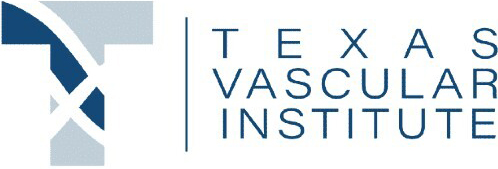By: Dr. Dev Batra | 01.30.23
When discussing vein disease, we often talk of its symptoms, its complications, and its cosmetic manifestations. It’s less common that we discuss its impact on everyday life. The symptoms of vein disease obviously cause a great deal of discomfort, but how do they impact routine activities and quality of life? And to what extent? To best answer these questions, we dug into the study results of the National Venous Screening Program.

The National Venous Screening Program
A total of 2,234 individuals across 40 states underwent free vein screening in 2006 as participants in the National Venous Screening Program. Screening consisted of a comprehensive ultrasound exam, a venous thromboembolism risk assessment, and an extensive questionnaire to evaluate the impact of chronic venous disease on daily life.¹ This workup is very similar to the steps we take here at Texas Vascular Institute.
Participants were 77% female and 80% Caucasian (6% Hispanic, 3% African American, and 3% Asian) with a mean age of 60 ranging from 17 to 93. About 40% of study participants were found to have C2 (varicose veins) or more severe vein disease when evaluated against the CEAP classification system, with about 10% living with skin changes and 0.5% (1 in 200) living with active venous leg ulcers.¹
The Impact of Vein Disease on Daily Life
Using the Chronic Venous Insufficiency Quality of Life Questionnaire (CIVIQ), participants were asked to what extent their ankles/legs negatively impacted their daily life in a number of areas related to pain, physical functional, and social activities.
Nearly 50% of National Venous Screening participants reported that they routinely experienced moderate to severe pain in their ankles/legs, and over 40% responded that they had difficulty standing for long periods of time or crouching/kneeling. Although these were the most common complaints, a large percentage of individuals also stated that they experienced sleep disruption due to discomfort in their ankles/legs. Around 1 in 3 individuals also reported that their ankles/legs caused them problems when climbing stairs, working, performing housework, walking briskly, or engaging in more strenuous exercise activities.¹

Percent of individuals reporting that their ankles/legs negatively impact an aspect of their daily life at least moderately. Based on responses to the Chronic Venous Insufficiency Quality of Life Questionnaire (CIVIQ) in the National Venous Screening Program.¹
While we feel that this mosaic of responses accurately reflects the experiences of individuals with chronic venous disease in our practice, there are some important study limitations to keep in mind with respect to the question of “How do vein problems affect daily life?” First and foremost is that, for many of the study participants, these experiences could be the result of other sources of morbidity. Higher CIVIQ scores (lower quality of life) were found to be correlated with more severe chronic venous disease (higher CEAP classification), but they were also found to be correlated with smoking, diabetes, hypertension, and heart failure. Because the study population was older, it’s also conceivable that other conditions that weren’t documented – such as arthritis – contributed to these responses.
Evaluating the Impact of Vein Disease On Overall Health
At Texas Vascular Institute, it’s very common for our patients to report persistent pain, sleep interruption, and difficulties in their daily activities due to discomfort in their legs. We feel that these aspects of daily life are important for individuals (and healthcare providers) to evaluate when considering the overall health implications of their vein disease.
About the Author
Dr. Dev Batra, M.D. is a vein specialist and founding partner of Texas Vascular Institute. Holding board certifications in radiology and vascular & interventional radiology, he is well-versed in vein issues and has been voted one of D-Magazine’s best doctors in Dallas for three years running.
This blog post was written with research and editorial assistance from OnChart™.
References
[1] McLafferty, R. B., Passman, M. A., Caprini, J. A., Rooke, T. W., Markwell, S. A., Lohr, J. M., … Dalsing, M. C. (2008). Increasing awareness about venous disease: The American Venous Forum expands the National Venous Screening Program. Journal of Vascular Surgery, 48(2), 394–399.
Medical Disclaimer
The Materials available in the Texas Vascular Institute blog are for informational and educational purposes only and are not a substitute for the professional judgment of a healthcare professional in diagnosing and treating patients.
Read more blogs
Varicose Veins in Hurst: Expert Care at Your Doorstep
At Texas Vascular Institute (TVI), we empathize with the discomfort and worry caused by varicose veins. That's why we're here in Hurst, providing cutting-edge treatments that are customized to address your unique needs. With our team of experts wielding extensive knowledge and experience, we promise to provide the utmost care in a warm and compassionate atmosphere. Let us help you find relief and regain your confidence!
Varicose Veins in Dallas: Quality Care You Can Trust
Our exceptional team of vascular specialists are true leaders in their field, armed with years of invaluable experience. Harnessing the power of cutting-edge advancements in vein treatment, they've transformed the lives of numerous patients, liberating them from the pain and unsightly burden of varicose veins. When you choose TVI, you're opting for unparalleled care and unwavering commitment to your varicose vein needs in Dallas.
How to Get Rid of Varicose Veins in Hurst?
The causes and risk factors of varicose veins vary from genetics to age, pregnancy, obesity, and prolonged standing or sitting, among other factors. Some typical signs and possible issues include discomfort, inflammation, irritation, hemorrhage, dermatological alterations, sores, and thrombosis. You may want to seek medical attention if you experience any of the following symptoms or complications.
WHAT OUR PATIENTS
have to say
Texas Vascular Institute always appreciates feedback from our valued patients. To date, we’re thrilled to have collected 378 reviews with an average rating of 5 out of 5 stars. Please read what others are saying about Texas Vascular Institute below, and as always, we would love to collect your feedback.
Leave a Review
Amazing Practice
I'm very particular with my Healthcare and tend to be cautious with referrals to specialists. This office is amazing from the first point of contact. Their staff are friendly, professional and highly knowledgeable. Then the Dr is just as amazing as his staff, absolutely brilliant. Office manager Jessica has this office running like a well oiled machine and does so with a smile, an air of confidence, kindness and professionalism. Love this practice!!
- Richard G.

Beyond Thankful
Dr Batra and his staff are amazing! We are so grateful to have found him. Everyone is so kind and so caring and Dr Batra explains everything so well and does procedures with excellence. Beyond thankful to be under their care!!!
- Bitsy P.

Gold Standard
This is a gold standard for how a medical practice should be run. I was promptly seen at my scheduled time, my ultrasound was thorough and I received plenty of attention and care from the staff and Dr.Batra.
- Weronika L.
INSURANCE
We accept most major insurance plans. Please contact the medical office for all insurance related questions.









3500 Oak Lawn Ave, #760
Dallas, TX 75219
For Appointments: 972-798-4710
General Inquiries: 972-646-8346

809 West Harwood Rd, Suite 101,
Hurst, TX 76054
For Appointments: 972-798-4710
General Inquiries: 972-646-8346

